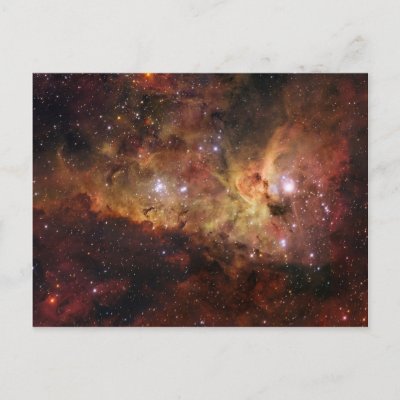The Whirlpool Galaxy is the brightest galaxy in the M51 Group, a small group of galaxies that also includes M63 (the Sunflower Galaxy), NGC 5023, and NGC 5229.
Tag Archives: laureen
Carina nebulae in space NASA Post Cards

HD 93129A is one of the most luminous stars in the Milky Way. This very young blue hypergiant is an O-type hypergiant located about 7500 light-years from Earth in the bright nebula NGC 3372, the same nebula that harbors other super luminous stars, like Eta Carinae. HD 93129A is actually the brighter member of a binary system that, with its dimmer companion—also an O3 Ia supergiant (HD 93129B)—has an overall mass of 200 solar masses.
NASAs Orion Nebula Post Cards

Orion Nebula The entire Orion Nebula in visible light. Credit: NASA/ESA Observation data: J2000 epoch Type Reflection and Emission Right ascension 05h 35m 17.3s Declination -05° 23′ 28″ Distance 1,344±20 ly (412 pc) Apparent magnitude (V) +4.0[3] Apparent dimensions (V) 65×60 arcmins Constellation Orion Physical characteristics Radius 12 ly[a] Absolute magnitude (V) — Notable features Trapezium cluster Other designations NGC 1976, M42, LBN 974, Sharpless 281 See also: Diffuse nebula, Lists of nebulae v · d · e The Orion Nebula (also known as Messier 42, M42, or NGC 1976) is a diffuse nebula situated south[b] of Orion's Belt. It is one of the brightest nebulae, and is visible to the naked eye in the night sky. M42 is located at a distance of 1,344 ± 20 light years and is the closest region of massive star formation to Earth. The M42 nebula is estimated to be 24 light years across. Older texts frequently referred to the Orion Nebula as the Great Nebula in Orion or the Great Orion Nebula. The Orion Nebula is one of the most scrutinized and photographed objects in the night sky, and is among the most intensely studied celestial features. The nebula has revealed much about the process of how stars and planetary systems are formed from collapsing clouds of gas and dust. Astronomers have directly observed protoplanetary disks, brown dwarfs, intense and turbulent motions of the gas, and the photo-ionizing effects of massive nearby stars in the nebula. There are also supersonic "bullets" of gas piercing the dense hydrogen clouds of the Orion Nebula. Each bullet is ten times the diameter of Pluto's orbit and tipped with iron atoms glowing bright blue. They were probably formed one thousand years ago from an unknown violent event.

